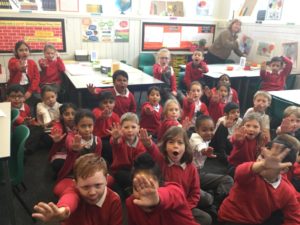Living and Learning – Anti-Bullying Week
During Anti-Bullying Week, we used the following image in our reading learning to retrieve and interpret information based around bullying.
We started by considering whether this is bullying.
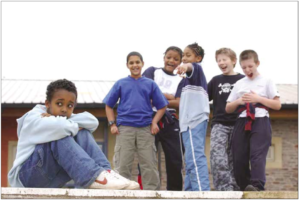
Well done to Gabriel H who confidently stated, ‘this isn’t bullying because we don’t know if they have done this several times on purpose.’
In another reading lesson, looking at word meanings, we used the school definition of bullying as there were some words we wanted to make sure we all understood.

Finally, the children came up with their own scenarios and asked the rest of the class whether it was bullying or not and why.
To support at home, ask your child what bullying means at Moortown Primary and what they would do if they were to experience bullying or witness bullying. STOP is a key message we use to reinforce the problem and the solution (Several Times On Purpose and Start Telling Other People).
Investigating numbers
This week the children made up superhero stories to help with their understanding of number.
They placed the small world superheroes in different places and were encouraged to use sentences to explain.
“There are two superheroes in the house. There are three superheroes in the garden. There are five superheroes altogether.”

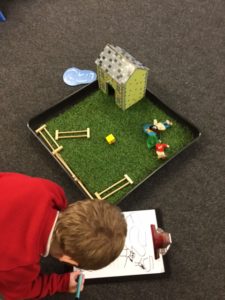
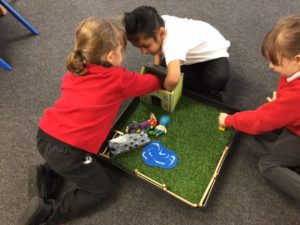
Supertato learning
This week, we’ve really engaged with the story, ‘Supertato‘.
The evil pea escaped from the freezer again – but luckily we made our own Supertatos to protect the classroom.
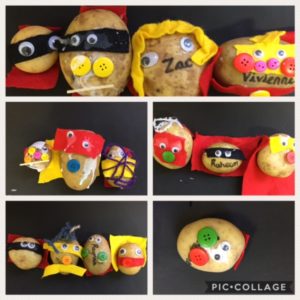
Unfortunately, some vegetables were frozen in ice and the children had to investigate how to free them.
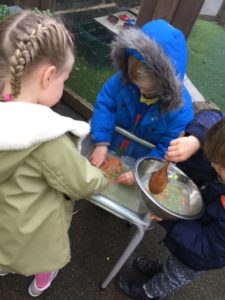
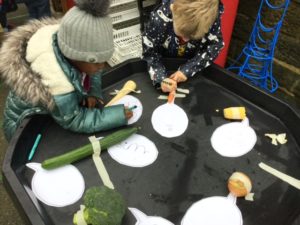
Ask your child to retell the story and take care! Check the peas are not escaping from your freezer!
Living and Learning: Anti-bullying week ‘Choose Respect’
This week, all classes have been learning about different aspects of bullying during national Anti-Bullying Week.
Thank you to those families who supported our Odd Socks Day on Monday, celebrating that we are all unique.
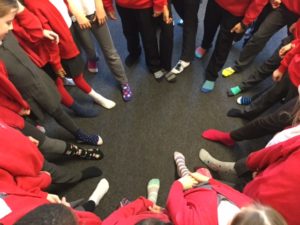
At their first meeting, our new School Council reviewed the school definition of bullying and this remains unchanged.
‘Bullying is when you hurt someone, physically or emotionally, several times on purpose.’
In addition to this definition, each class has considered the following.
- Types of bullying – cyber-bullying and prejudice-based bullying related to gender, sexual orientation, race, religion and belief, special educational need and disability
- What to do if children experience or witness bullying. The key message is to tell someone (start telling other people)
STOP can stand for two key messages: the definition or the problem (Several Times On Purpose) and the solution (Start Telling Other People).
All classes have access to their class I want to say box or a whole school worry box where they can tell an adult any concerns about bullying or any other issues.
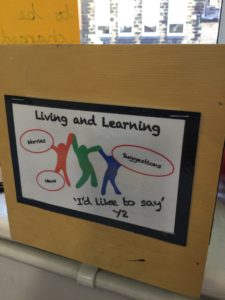
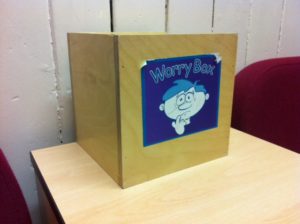
Our whole school homework this week, will allow children to consolidate this learning and show what they have learnt in a creative way.
We encourage you to discuss this learning with your child and for further support, bullying resources can be found at…
- https://www.anti-bullyingalliance.org.uk/tools-information/advice-parents
- https://www.kidscape.org.uk/resources/
- http://www.bullying.co.uk/advice-for-parents/
- https://www.internetmatters.org/hub/news-blogs/get-involved-in-anti-bullying-week-2018-choose-respect/
- https://www.nspcc.org.uk/preventing-abuse/child-abuse-and-neglect/bullying-and-cyberbullying/keeping-children-safe/
- https://www.childline.org.uk/info-advice/bullying-abuse-safety/types-bullying/
- https://youngminds.org.uk/find-help/feelings-and-symptoms/bullying/
Was the invention of flight a good or bad thing?
As part of our homework review, we thoroughly enjoyed a debate about whether the invention of flight has had a positive or negative impact on the world.
Year 5 came up with loads of amazing points and were able to discuss them maturely and fairly.
Here’s a summary of our discussion.
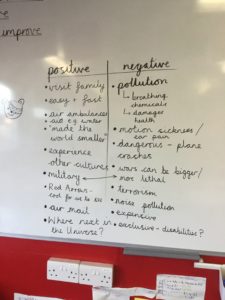
Living and Learning – Anti-Bullying Week
This week, we’ve been talking about how we can help stop bullying. We had a discussion in class about what this means.
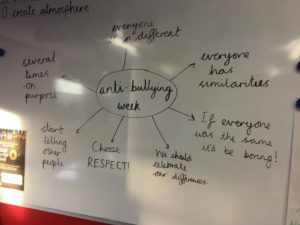
We have also enjoyed some very odd socks and this helped us understand how we’re all the same in some ways but completely different in others. We also each completed a jigsaw piece to represent who we are. They came together to form a Year 5 puzzle which was not complete without each individual and amazing piece.
Celebrating difference makes us more tolerant and accepting and choosing respect will help make bullying a thing of the past.
Topic maths
We’ve already learnt lots about transport through the ages and today we linked our topic with some maths. Year 4 have shown a lot of interest and curiosity regarding one of the biggest transport tragedies of all time – the sinking of the Titanic. We held a debate to discuss whether or not it is right to retrieve artefacts from the sunken ship. Does this help us to appreciate how items from the past can help to understand history?
With a focus on how the lives of wealthy people were very different from those of poor people, the children studied the class system on board the Titanic. After examining a cross section of the famous boat, we had a much clearer view of each class and whereabouts they were situated on board.
Did more first class passengers survive the disaster?
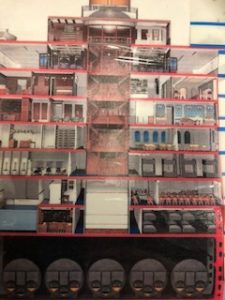
In order to answer this question, the children had to collect and record some information about the capacity of the lifeboats. Then, using this data, Year 4 had to present their findings in the form of a bar chart. Next, after looking at the total available capacity of one boat, they had to work out how many 1st, 2nd, 3rd class passengers were in the lifeboat and how many crew.
The children were then able to calculate the amount of empty spaces there sadly were on lots of the lifeboats.
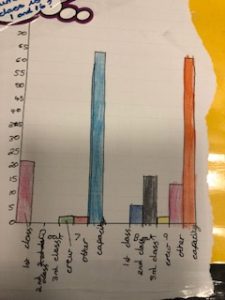
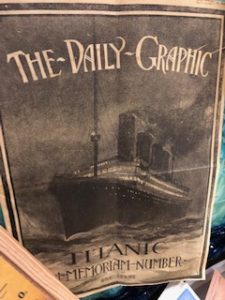
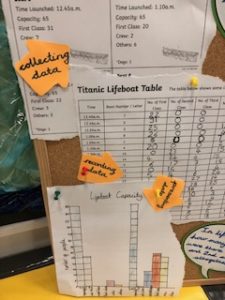 At the end of our lesson we discussed icebergs. Having already created one over night, the class looked closely at the iceberg in water.
At the end of our lesson we discussed icebergs. Having already created one over night, the class looked closely at the iceberg in water.
“Most of the ice is under the surface of the water,” commented Ethan.
Harris added, “Ninety per cent is underwater.” A fact he already knew!
We discussed that each iceberg is unique. They float low in the water due to the sheer weight of the ice, which is why the tip of an iceberg is no measure of what lies beneath. Quite a scary thought!
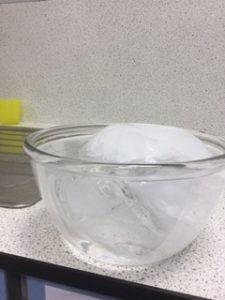
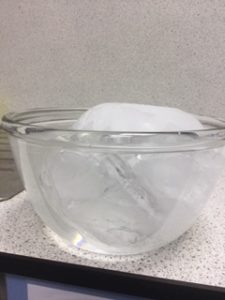
Super Skipping
This morning, Year 4 took part in a skipping workshop. The children were taught many different skipping styles, some of which were really quite complicated. However, this did not deter the class! Instead, the approaches taken by the children were full of both resilience and determination.
Later in the year, we’ll be taking part in a skipping competition alongside other schools.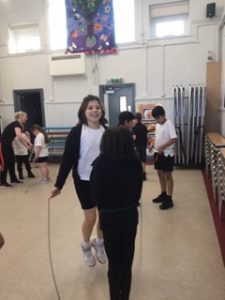
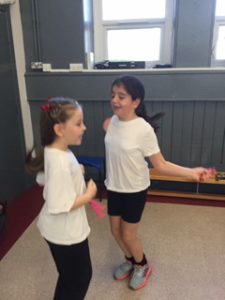

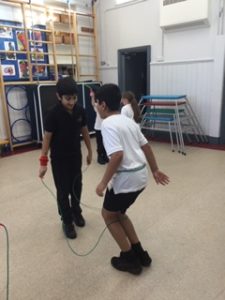
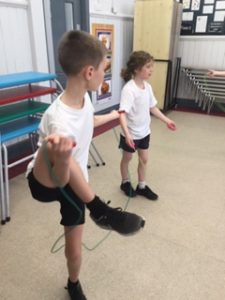
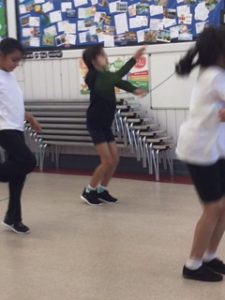
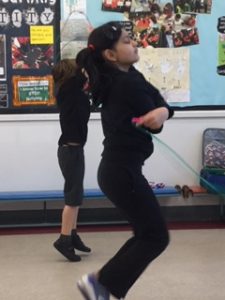
RE – Special Messages
In RE, the class were learning about the birth ceremonies for the Christian and Muslim faiths.
The class were fascinated to learn that a Muslim father whispers a special message to his baby as soon as they are born. It was really nice to see members of the class sharing their personal knowledge of this with the rest of the class.
We talked about what special message we would like whispered into our ears. The class came up with some brilliant and thoughtful special messages, below:

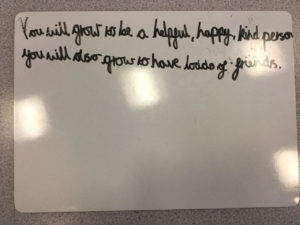


Great job Year 3!
Living and Learning
This week it’s anti bullying week. In Living and Learning, Year 3 discussed what bullying is and what they should do if they are being bullied.
The class shared that S T O P defines what bullying is. It stands for:
S – several
T – times
O – on
P – purpose
Year 3 then discussed that S T O P also explains what to do if you’re being bullied:
S – start
T – telling
O – other
P – people
Check our Year 3 saying STOP, below!
